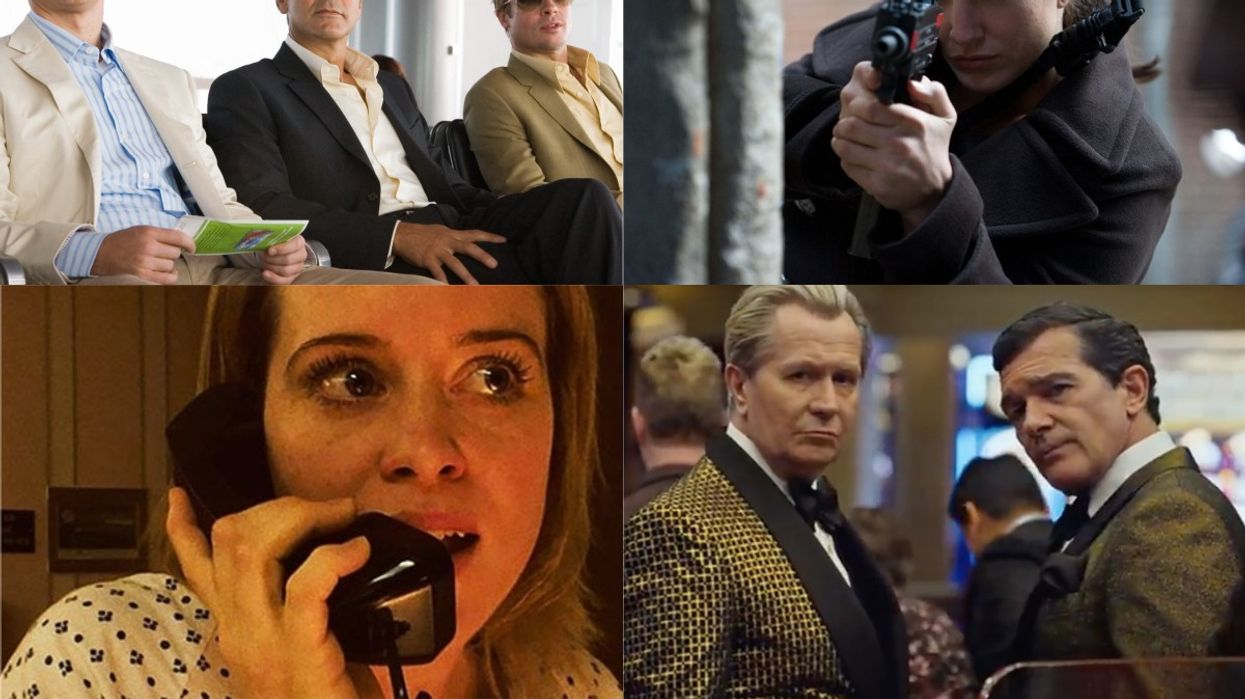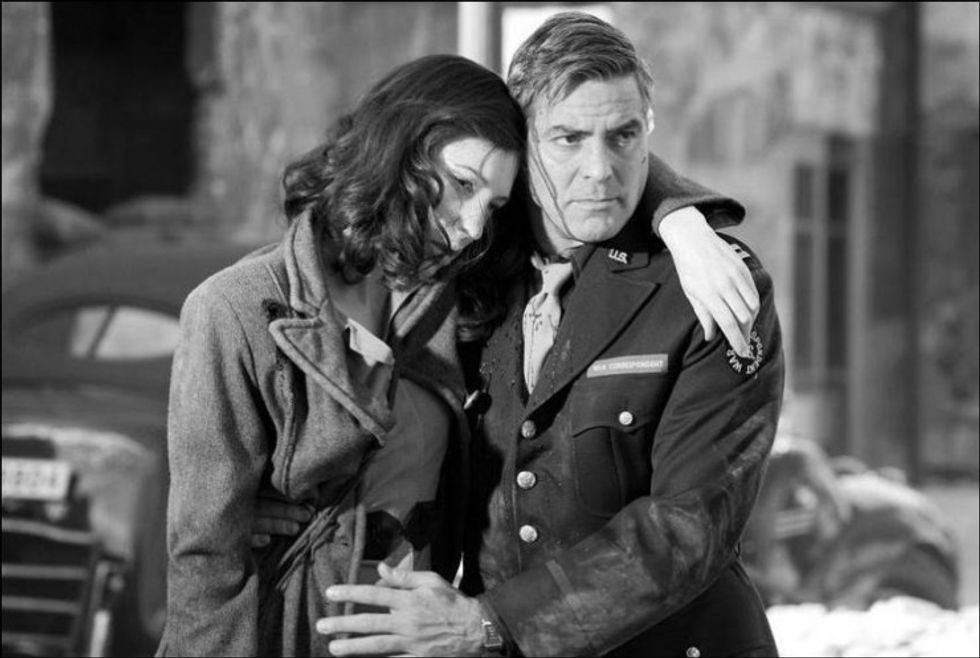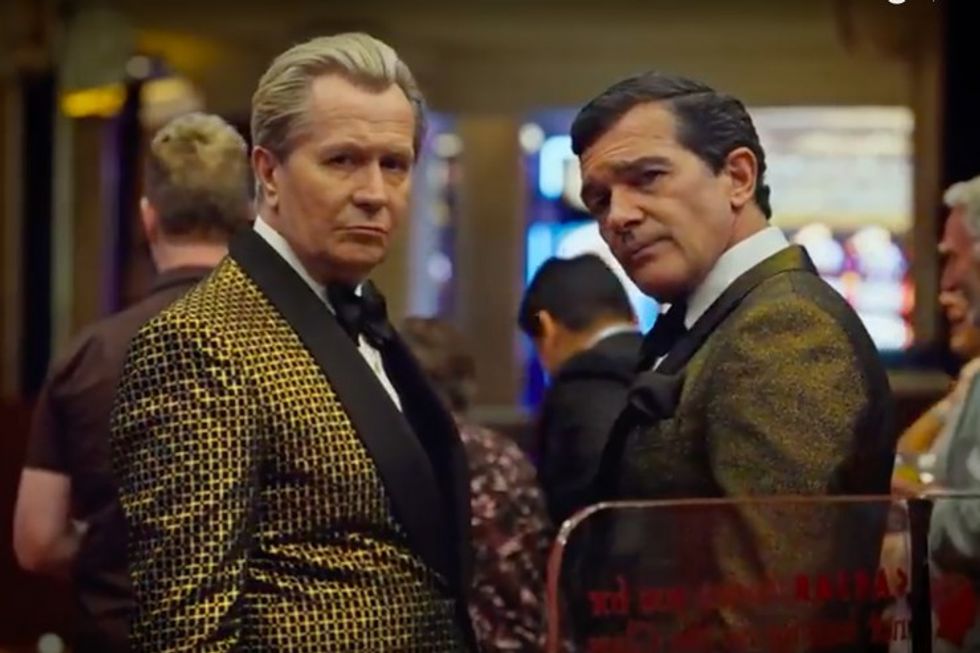Steven Soderbergh's 7 Most Underrated Movies (and What You Can Learn From Them)
Steven Soderbergh is less a filmmaker and more a force of nature. Here are his most underrated films that can change the way you make yours.

In the past decade, the Oscar-winning filmmaker has directed ten features, two seasons of television (plus whatever the hell Mosaic was), along with producing many more television shows and movies and shooting second unit on the first Hunger Games.
And, keep in mind, this was all after he supposedly "retired" in 2013 with Magic Mike. (Feeling lazy yet?)
With so much output, it's understandable that some of his accomplishments -- and what those accomplishments can teach you about the art and commerce of moviemaking.
The Underneath(1995)
An early experiment in neo-noir, The Underneath (available as a special feature on Criterion's King of the Hill Blu-ray) is an interesting and entirely forgotten entry in Soderbergh's filmography, when the director was eagerly experimenting while finding his artistic voice.
Anchored by a terrific Peter Gallagher performance (as an armored truck driver who plots to rob his employer), it has plenty of kinky weirdness (shades of sex, lies, and videotape abound) and stylistic swagger and offers a hint of things that he would circle back to later in his career.
What You Can Learn:
Get inventive with how your film delineates time.
One of the cooler aspects of The Underneath is that, in the twisty, turny storyline, time is delineated by color choices -- if you see something in a particular hue, you'll be able to when it occurred in the narrative. Not only is it an ingenious way of telling the story visually, without cumbersome time stamps, but it is an idea that Soderbergh would return to, first in Out of Sight and then again in his Oscar-winning Traffic -- although in both of those cases, the harsh bypassing process was used to establish where and not when.
Ocean's Twelve (2004)
After the runaway success of Ocean's Eleven -- which, despite its all-star cast, was far from a sure thing -- plans were quickly put in place for a follow-up.
This time, a sequel would utilize parts of a screenplay Warner Bros. had already been sitting on, hastily reformatted for Danny Ocean (George Clooney) and his gang. And what could have been rote corporate product is elevated significantly by Soderbergh's playful stylistic choices and the full commitment of the very game cast (particularly in the goofy, weirdly meta final act).
While not the best entry in the franchise, you could argue that it is the most interesting and aesthetically-arresting installment.
What You Can Learn:
Arty influences can shape even the biggest blockbuster.
Soderbergh has been open about his primary influence on Ocean's Twelve being European art films of the 1960s and '70s. Normally, when directors cite high-minded influences on what are essential big budget studio product, the connections are fuzzy if anything (James Mangold name-checking Ozu while promoting Logan springs to mind). But with Ocean's Twelve, you can totally see the connections in the final film.
It's a testament to how you can grab influence from anywhere and how you should let those influences actually do their thing, no matter the scale or size of the project.
Bubble (2005)
Part of a series of loosely connected series of films Soderbergh was producing for super-producer Mark Cuban, that were to feature non-professional actors and take place in different American cities, released simultaneously in theaters and on demand (the project, following The Girlfriend Experience, sputtered out), Bubble is the better film and the more dramatically underrated.
A pseudo-murder mystery set at a doll factory, it is an unusually engrossing and totally bizarre film, running a cool and tight 73 minutes. It might have been Soderbergh stretching his legs while making bigger studio projects, but it feels just as essential as anything else from this period of his career.
What You Can Learn:
Stars can come from anywhere. Don't be afraid to go waaaaay outside the box with your casting choices.
The lead of Bubble is Debbie Doebereiner, who the film's casting director discovered while Debbie was working at a Kentucky Fried Chicken drive-thru window in rural Ohio.
Her performance, at once nuanced and completely naturalistic, adds so much to the movie, giving it a kind of mesmeric quality that you cannot look away from. This is proof that you don't need the biggest stars (or, indeed, even properly trained actors) to anchor your project. Maybe try the drive-thru for lunch?
The Good German (2006)

The Good German isn't one of Soderbergh's best movies. Far from it.
But it is one of his most interesting and strange, thanks largely to a number of large swings the filmmaker (shooting it in black-and-white and in the 1.66:1 aspect ratio) and performers (including George Clooney and an absolutely savage Tobey Maguire) make.
It's also staggering that this was a fairly sizable studio project (with a reported budget of $32 million) aimed at mainstream audiences, considering how insanely weird it is. But it speaks to the power of Soderbergh as a filmmaker and Warner Bros' loyalty to back him (perhaps as a thank you for the Ocean's blockbusters). It's a miracle it exists at all.
What You Can Learn:
Some of the lessons you can learn from Soderbergh's ouvre aren't positive and this is one of those.
The Good German was made in the style of postwar American cinema, with some modern flourishes in terms of its sexuality, language and depiction of extreme violence. But meticulous recreation is not what makes for a great movie, and The Good German is proof of this.
The whole thing feels hermetically sealed and emotionally detached; there needed to be more oomph. (Irish electronic artist David Holmes, who originally provided the score but was replaced during post-production, probably could have added some zip.)
When making your own period piece, be sure to not get stuck in slavish Xeroxing. There have to be fresh elements to make it feel alive.
Haywire (2011)
If you've seen The Mandalorian, then you know who Gina Carano is and how much ass she can kick.
But Haywire, largely overlooked during its initial theatrical run, was my first introduction to the former MMA fighter. And it is a jaw-dropper.
Playing a spy who is double crossed by pretty much everyone and left to fend for herself, seeking revenge and putting the pieces of her betrayal back together, Carano radiates screen presence and charisma, easily outshining her starry supporting cast (including: Ewan McGregor, Michael Fassbender, Michael Douglas, Antonio Banderas, and Channing Tatum).
At the time, Soderbergh had said that he wanted to make a James Bond movie starring Pam Grier, and you feel those influences surge beneath the surface of Haywire.
What You Can Learn:
Silence is golden. Especially in fight scenes.
Let your sound design be a character and help deliver that which dialogue and picture sometimes can't.
Haywire had a problematic path to the big screen, with Soderbergh clashing with original distributor Lionsgate over a number of factors, chief among them: the fact that the fight sequences -- which are lengthy and complex -- would be staged completely without music. (Holmes' funky electronic score elsewhere in the film totally rules, however.)
This approach to the action set pieces turned out to be one of the movie's biggest virtues; it makes every punch and kick carry a greater importance and lets you focus on the choreography and athleticism of the sequences. The centerpiece is a battle in a hotel room with Fassbender, which is so visceral that you'll check yourself for bruises afterwards.
And every filmmaker, especially those interested in the action genre, would do well to take note of this absence of sound and the power that can come from that (see also: the Laura Dern kamikaze run in The Last Jedi). For some reason western action movies are brutally over-scored. We could use a step back.
Unsane (2018)
When Soderbergh re-emerged after his so called "retirement," he had a number of new interests, including his desire to distribute his movies himself and sell them using smaller, targeted marketing.
One of the movies that he tried to get out that way was Unsane, his intense psychological thriller starring Claire Foy as a woman falsely imprisoned in an asylum where her abusive ex works.
The end of his loose hypochondriac trilogy (it started with Contagion and continued with Side Effects), it's terrifying and real, with Soderbergh piling on the paranoia and claustrophobia to an almost unbearable degree. Even more impressive is that he pulled it all off shooting on an iPhone.
His marketing and distribution model ultimately failed (his last two movies were made for Netflix and the next one is for HBO Max), but at least it left us with some great movies.
What You Can Learn
Work with what you've got.
Part of what makes Unsane work so well is how close Soderbergh gets to his actors and part of that was achieved through the filmmaker shooting the entire movie on an iPhone.
Soderbergh has made huge studio films and yet he chose to use an iPhone for its dexterity and versatility and it should inspire any filmmaker, in any stage of their career, to work with what you've got and just make it happen. Time to put on a show, everyone.
The Laundromat (2019)

Written by Scott Z. Burns, it's the story of the Panama Papers, a financial scandal that exposed governments, heads-of-state, and civilians who were engaged in some very dicey practices.
It could have been a very dry, connect-the-dots docu-drama, but Soderbergh and a very starry cast (including Meryl Streep, Antonio Banderas, Gary Oldman, Sharon Stone, and David Schwimmer) go in the complete opposite direction, creating a fantastical farce that takes turns into the surreal and (occasionally) very scary.
What You Can Learn:
Lean into the complexity of history. And shape your story accordingly.
The takeaway from Soderbergh's approach to the story is that you can either shy away from the truth -- with all of its moral ambiguities, tangential side-stories and half-truths -- or you can lean into it, to embrace the fanciful nature of history and explore all of those dangling chads to their fullest.
And thats what he does.
Soderbergh and Burns could have made a straightforward narrative; Burns just did with the very-good The Report. But instead, the filmmakers chose something bolder and more forward-thinking (the fourth wall is constantly broken), in a weird way getting you closer emotionally to the characters than if it was just a normal movie.
Some have compared it to The Big Short, but The Laundromat is significantly stranger. Filmmakers should take the note. It doesn't have to be a crusading lawyer or journalist who uncovers the conspiracy. Sometimes the conspiracy should just be addressed head on, in all of its knotty complexities.










![Ethos, Pathos, Logos: 20 Effective Ways to Advertise [Infographic]](https://nofilmschool.com/media-library/ethos-pathos-logos-20-effective-ways-to-advertise-infographic.jpg?id=34064614&width=600&height=600&quality=90&coordinates=560%2C0%2C0%2C0)

